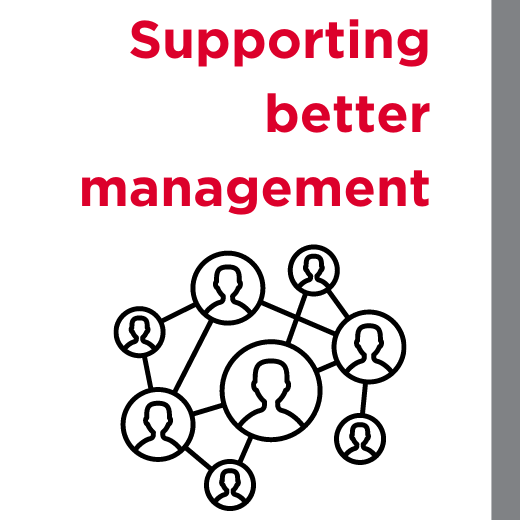World Water Day, commemorated annually on Friday, 22 March, seeks to bring attention to the global water crisis. This year’s theme, ‘Water for Peace’, highlights the urgent need for cooperative efforts and sustainable practices to ensure access to water for all. The GSMA ClimateTech and Digital Utilities programmes recognise the dynamic yet complex relationship between water and peace, and how digital solutions can play a role in bringing prosperity through effective water management.
A crisis of many faces
The world is facing a water crisis of immense magnitude. It is turning hot and dry, wet, and inundated all at once. In the past year, most regions in the world were affected either by extreme floods or drought, with parts of Pakistan, Ethiopia and Uganda facing both.
Meanwhile, there are tremendous gaps in access. 2.2 billion people don’t have access to safely managed drinking water. Water is also one of the nine planetary boundaries identified by the Stockholm Resilience Center as crucial for a livable planet. Currently, water no longer resides within the safe margins required for humankind to thrive or develop.
Water and conflicts
These extremes, gaps, and transgressions described above do not occur in a vacuum. Climate extremes become disasters, in part, because of the social, political and economic structures they occur in.
Humans influence the water cycle at several touchpoints, from local to global, which can shape the accessibility, quantity, and quality available to meet human needs. Water management practices are far from benign, with unequal and unfair distribution contributing to water-related conflicts.
The Pacific Institute’s Water Chronology database maps 1634 water-related conflicts dating from 2500 BC onwards. Over time, water has been a trigger for conflict, as well as a weapon or causality. They are poised to intensify with increasing pressure from factors such as climate change, unsustainable water use, population growth, and unchecked urban expansion. Understanding key drivers of water conflicts, alongside proven solutions, is an important starting point in tackling this complex and far-reaching challenge. Below we outline four key areas where water and conflict intersect, before exploring how digital solutions can contribute to resolving or preventing them.
The transboundary nature of water
Water neither reflects nor recognises political, administrative or cultural boundaries. Transboundary waters, spread over 276 rivers and lake basins, account for 60% of global freshwater resources. Land use and water management decisions within one administrative boundary often impact shared water systems, ultimately leading to conflict. In many cases, intergovernmental partnerships are needed to address the transboundary governance challenge. For example, the Nile Basin Initiative is the primary vehicle coordinating and managing the eleven Nile riparian states.

To effectively address this unique resource management challenge, there is a need to move away from piecemeal water management to an integrated approach that considers holistic, cross-sectoral and transboundary solutions. This includes ensuring an inclusive and participatory approach to managing water, considering diverse water users, and building better relations across the river basin.
Climate change and water
The frequency and intensity of extreme weather events, including increased precipitation, storms, heatwaves and droughts, are already impacting many and are set to intensify. According to the Intergovernmental Panel for Climate Change’s (IPCC) sixth assessment report, roughly 60% of the total recorded climate adaptation measures are linked to water-related hazards like droughts or floods.
Addressing issues around water should be at the heart of climate action. This can be tackled through the conservation and regeneration of wetlands and mangroves, promotion of effective use and reuse of water, and reduction of water pollution. Additionally, climate resilient water infrastructure is important to resist and recover from the impact of climate shocks. This can be strengthened through the adoption of innovative technologies.

For example, BENAA, a start-up serving communities in rural Egypt, is leveraging the Internet of Things (IoT) to convert wastewater into irrigation water for small farms and improve local water resource management.
Water and livelihoods
For many people, access to water is intimately tied to their livelihoods. The agricultural sector employs 26% of the global population, rising to 40% in low- and middle-income countries. The sector accounts for an average of 70% of the world’s total freshwater withdrawals, with water shortages linked to 10% of the rise in global migration.
Tackling this livelihood challenge requires varied solutions. This includes the use of more water prudent and climate resilient crops, reviving traditional water bodies like ponds and wells to drought proof regions, diversifying farm incomes, and adopting mobile and digital technologies, ranging from hyperlocal weather information to digital marketplaces, to equip farmers against water insecurity conditions.
Urban water management
Over half of the world’s population lives in urban areas and this number is expected to considerably increase in the coming decades, placing immense demand on city water systems. Urban water crises, from Cape Town in South Africa to Jakarta in Indonesia, are stark examples of the possible impacts of acute water scarcity in cities. However, such crises also provide an opportunity to learn and course correct to build more resilient infrastructure and systems.
Common factors that contribute to the water crisis in cities include unplanned expansion that encroach over waterbodies and wetlands, industrial and domestic pollution into water bodies, and a lack of drainage increasing flood risk. Urban spaces are also witness to persistent water inequities where access to safely managed drinking water is a significant challenge to marginalised and vulnerable populations.
Addressing these challenges will require a multifaceted approach, including investment in climate resilient water infrastructure, aligning urban planning with basin management, improved citizen participation in water management, and ensuring a more equitable water supply.
How can digital technologies help?
Digital technology can be used to manage water crises and prevent them altogether. Two key ways in which they can be leveraged include:

Online platforms can facilitate collaboration, communication and sharing of information among various levels of government entities and stakeholders across administrative boundaries and prevent them from functioning in silos.
For example, the Gambia River Basin Development Organisation (OMVG) with its four member states (The Gambia, Guinea, Guinea-Bissau, Senegal) is piloting a digital platform that assists with data management.
Standardisation of data has also improved cooperation over transboundary water. The Water Accounting Plus (WA+) framework uses open-access remote sensing data, provides quantified information on water fluxes and the depletion across several river basins. This framework, developed by IHE Delft and supported by organisations such as FAO, is being deployed in the Cauvery (Kaveri) basin in India to solve water sharing issues across the four states that use the Cauvery waters. While the use of WA+ contributes to water cooperation, these tools need to be embedded and adjusted to fit local contexts for ongoing positive outcomes.

Digital technologies such as artificial intelligence (AI) and machine learning can empower communities and stakeholders in their decision-making processes by enabling them to collect and better analyse different kinds of data.
For example, the Global Early Warning Tool, developed by the Water, Peace, and Security Partnership uses AI to predict water conflicts up to a year in advance. There is also an opportunity for mobile operators to help communities and climate service providers leverage unique sources of data for more informed plan.
It is also integral that effort is made to translate the data and information generated by these solutions into meaningful and understandable forms for stakeholders at various levels.
Conclusion
Conflicts related to water are indicative of the wider water crisis that confronts us. Solutions must be tied to addressing underlying problems of water inequity, weak transboundary governance, absence of integrated water management and a lack of climate-inclusive water planning. Digital technologies hold immense promise in preventing and managing water crises through their capability to gather, structure and compute data in real-time to enable informed water management decision-making. They can assist in creating holistic systems and future-ready infrastructure that can withstand and adapt to changes over time, creating more participatory, cross-sectoral and transboundary water management solutions for all.




